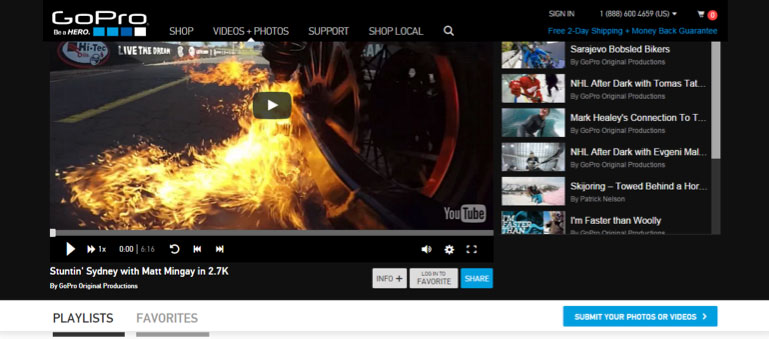The ultimate measure of marketing effectiveness for any business website is how well are you able to turn site visitors into actual paying customers. But just because you invest in a flashy new responsive website design or post multiple blog posts every week doesn’t mean people are automatically going to make a purchase. That requires having a cohesive marketing strategy in place.
For many companies, that starts with the sales funnel—the process you intend consumers to experience as they make their way towards becoming customers. However, research suggests the key to converting site visitors into paying customers might actually look more like a ladder than a traditional sales funnel. What’s the difference?
In most cases, initial participation starts off small—reading or liking a blog post and star ratings for a product or service—and then builds up to shares, signing up for your email newsletter, downloading a whitepaper, commenting on your blog, and other more active forms of social engagement. Keeping that in mind, it’s just as important to think about what you ask (i.e. your calls-to-action) as it is when you ask (where they are on the ladder).
Think of a first time visitor to your website as someone standing at the bottom rung of a ladder. At that point, they’re probably not thinking about getting all the way to the top (i.e. making a purchase)—rather they’re looking for the best way to take their first step—and that’s something that can vary greatly from visitor to visitor. As they become more engaged with a website (or higher up on the ladder), the study of data from more than 100,000 Last.fm users finds they become more willing to pay for its services. From the authors…
User engagement is not an ‘if you build it, they will come’ situation. Many sites never reach their engagement goals. Take an active role in encouraging users to climb the ladder of participation.
Last.FM
The key is understanding your “ladder of participation” — how your target audience wants to interact with your brand and your website and mapping out a strategy based on who they are and when they move from one rung to the next.
What to Consider
Think about your website. What are you hoping people will do when they visit the site overall? How would you like them to engage on each unique page? Are there untapped opportunities to drive more social engagement?
You can’t just assume having icons for your social media pages in your website header or footer are automatically going to drive social engagement or increase website conversions. In fact, when we look across a sampling of companies, we consistently find those icons are generally ineffective.
How GoPro Does It
For a concrete example of how to better leverage your content marketing to drive social engagement, let’s look at GoPro. They’re not just focused on product descriptions. Specifically, notice their “Channel” in the main navigation where you’ll find photos and videos including user generated content. With each item, you can watch (requires almost no effort to engage), log in to favorite, share on your social networks, and submit your own photos and videos (requires moderate effort). Not only does that help make the website incredibly interactive, it also creates more opportunities for community engagement and increases the likelihood that someone will share the information thus expanding GoPro’s brand reach.

How it Compares
Compare this to the traditional sales funnel model where you would use your website to cast a wide net in an effort to separate qualified leads from less qualified prospects based on their likelihood of making a purchase. By aligning more closely with a consumer’s decision making process, the ladder of participation framework is more tailored to individual users based on their desired level of engagement over time, past experience with your website, etc. In other words, they don’t just “flow” from one area of the funnel to the next. They have more of a say in their path to conversion.
As you think about your digital marketing strategy, it’s critically important that you understand your target audience and their journey from first point of contact until well after they make their purchase. From there, spend some time exploring their desire for social engagement so your website can provide the best mix of functionality and social activity based on their unique needs and expectations. Bonus: doing so will also create a great opportunity to have a direct dialogue with your customer base.
Patience is a Virtue — For Sales, Too
Once your strategy is in place, remember to be patient. That’s often easier said than done, but climbing from rung to rung can take time and often varies by each user. You’re using your website to build an active community that helps foster relationships with current and prospective customers.
Of course GoPro is just one example from a major brand. What would your ladder of participation and social engagement look like for your website based on your unique target audience and marketing goals?
Are you a Last.fm or GoPro user? Let us know on Twitter how they’ve been able to use the ladder of participation to increase engagement.
You can learn more about the research study including four key marketing insights here.
